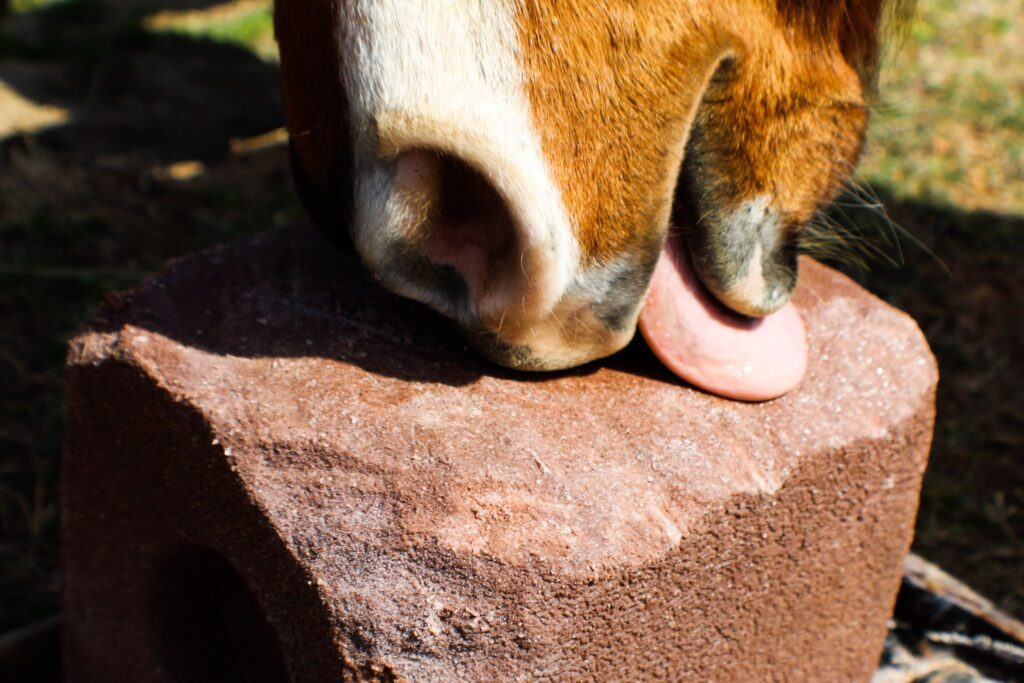
Evaluating your horse’s mineral status is important as we always want to ensure that there are no nutritional deficiencies. However, understanding the limitations of the common laboratory tests is crucial. There are three common methods for investigating mineral status in the horse: blood work, hair analysis and diet calculations.
Blood Work
Bloodwork is of course, a crucial component of health care. A basic complete blood count (CBC) can provide your veterinarian with a significant amount of information on your horse’s overall well-being. Unfortunately, the research has shown that it cannot be relied on to evaluate the nutritional status of horses for most nutrients.
Part of the reason that it is unreliable is due to the ability of the body to tightly regulate mineral levels in the blood. For example, if calcium is severely deficient in the diet, the blood levels will likely still appear to be normal as the body stores will be depleted to maintain the blood calcium levels within the narrow range. This can be dangerous, as you may think that your horse’s daily ration is meeting their calcium requirements, when it is in fact dangerously low.
Another example of a mineral that cannot be accurately evaluated through blood work is iron. Evaluating the body’s iron stores and free iron status through bloodwork is ineffective. When evaluating blood iron, a more complex blood analysis is required as you must look at ferritin and transferrin (blood proteins) as opposed to circulating iron in the blood.
One study that investigated serum ferritin in horses concluded that serum ferritin should allow nutritionists and veterinarians to determine if a horse is iron deficient, prior to making dietary changes. However, they noted that serum iron, total iron-binding capacity or saturation percentage of transferrin are not correlated with tissue iron stores. Therefore, specifically testing for serum ferritin is recommended as just evaluating serum iron is not an effective testing method.
Two nutrients that blood work is effective at evaluating are vitamin E and selenium. In fact, if you are concerned about your horse’s vitamin E status, I highly recommend blood work to test your horse’s vitamin E status.
The other important thing to remember when evaluating a blood sample for mineral status is that it is only showing us a moment in time. Mineral levels in the blood will vary depending on a variety of factors such as workload and the time since eating. Therefore, using this information to identify either over or under supplementation of minerals (except for selenium) is not recommended.
Hair Analysis
Hair analysis (either mane or tail hair) is another technique that is occasionally used. I often see this recommended on sites that also sell supplements which, in my opinion, is a conflict of interest. Research has shown that there is less variability in hair mineral analysis than in blood, however, it is not at all the current picture of what is going on. When you look at the results from a hair analysis, the information you are gathering is from many months ago and does not reflect the present diet.
With hair analysis, there is some evidence to suggest that it is effective for testing if a horse has been exposed to heavy metals but is not reliable to evaluate trace mineral status or the horse’s diet.
One of the main issues with hair analysis results is that we do not yet have clearly defined reference ranges to tell us what normal is. There are a variety of labs that perform these analyses; however, the results are difficult to interpret due to the normal ranges being inconsistent. Contamination of the sample with dirt can also greatly impact the results.
A study that was published in 2022 compared mineral analysis results from equine hair samples across three different laboratories. It was concluded that the results were not consistent, and this is thought to be due to the poorly established reference ranges. Therefore, this recent publication concluded that hair analysis is not a reliable method to assess mineral intake in horses.
Another study that was published in 2020 did not find that whole blood trace mineral concentrations were correlated with main hair trace element concentration in horses. Therefore, because bloodwork cannot accurately reflect mineral deficiencies or toxicities and hair analysis does not have reliable reference ranges, and provides historical information, the recommended way to evaluate your horse’s mineral status is through the diet.
Take Home Message
If you suspect that your horse has mineral deficiencies, making sure that the diet is properly balanced should be the first step. Sending your hay for an equine complete analysis and consulting a nutritionist to evaluate the ration is a straightforward process. This will give you a wealth of information to base any required nutritional changes on. From there, if you still have concerns about vitamin E or selenium blood work can be a great tool to evaluate those nutrients.
By: Madeline Boast, MSc. Equine Nutrition
References:
Brummer-Holder, M., Cassill, B. D., & Hayes, S. H. (2020). Interrelationships between age and trace element concentration in horse mane hair and whole blood. Journal of equine veterinary science, 87, 102922.
Ghorbani, A., Mohit, A., & Kuhi, H. D. (2015). Effects of dietary mineral intake on hair and serum mineral contents of horses. Journal of Equine Veterinary Science, 35(4), 295-300.
Janiszewska, J., & Cieśla, A. (2002). Concentration of cadmium and lead in horse blood serum and hair in relation to season and environment. Electronic Journal of Polish Agricultural Universities, Animal Husbandry, 5(1).
Smith, J. E., Moore, K., Cipriano, J. E., & Morris, P. G. (1984). Serum ferritin as a measure of stored iron in horses. The Journal of nutrition, 114(4), 677-681.
Wahl, L., & Vervuert, I. (2022). Commercial Hair Analysis in Horses: A Tool to Assess Mineral Intake?. Journal of Equine Veterinary Science, 119, 104145.
Copyright © 2024 Balanced Bay Nutrition | Site Crafted by Bay Mare Design